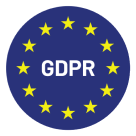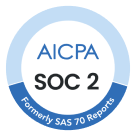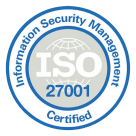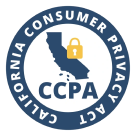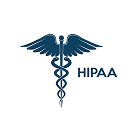
Angela picks up her headset as the phone lights up—again. It’s barely 9:15 AM and she’s already handled a prescription request, a panicked parent trying to reschedule, and a billing question that really should have gone to a different department.
For Angela, each call matters. Every second counts. And when you’re juggling high volumes with patient privacy on the line, there’s no room for dropped calls or misrouted queries.
In healthcare, a delayed response can create anxiety. A misrouted call could mean a compliance risk. And with rising expectations around service quality, healthcare providers can’t afford broken workflows. Even if they’re handling approximately 2,000 calls daily.*
This guide breaks down how to build a patient-first call flow with real-world script examples and best practices for teams handling sensitive healthcare conversations.
Key Takeaways:
- An efficient call flow is about precision. Proper routing ensures medical questions go to clinical staff and billing issues land with admin, reducing liability and improving resolution time.
- Call center agents are frontline extensions of your care team. How they greet, authenticate, and guide patients sets the tone for the overall care experience.
- Modern call systems like CloudTalk allow healthcare organizations to automate repetitive tasks, monitor agent performance, and enforce compliance protocols at scale.
Close gaps in your patient support workflow
Why Call Flow Optimization Matters in Healthcare
Healthcare call centers manage moments that can directly impact patient outcomes.
Whether it’s someone calling to report worsening symptoms or a caregiver trying to clarify insurance coverage, the expectation is clear: The person on the other end needs to know what they’re doing.
If you’re managing call infrastructure at a clinic, hospital, or multi-location practice, a disorganized call flow means more than just inefficiency. It leads to longer hold times, frustrated patients, and compliance risks. Every call that gets misrouted or delayed is a missed opportunity to deliver care—or worse, a potential liability.
Optimizing call flow helps you:
- Resolve issues faster by directing calls to the right team on the first try
- Improve satisfaction by creating a smoother, more empathetic experience
- Stay secure by embedding security and verification steps into every interaction and remaining HIPAA compliant
Build secure, patient-centric call workflows
Key Stages in An Optimized Healthcare Call Flow
Angela’s been working in the call center for six years. She knows when a patient’s calling for help versus calling out of frustration—and she also knows the difference a structured call flow can make. When every stage of the conversation is intentional, patients get what they need faster, and her team spends less time apologizing for delays or mistakes.
An optimized call flow improves operations, giving agents like Angela the tools to offer better support at scale.
Here’s what that looks like in practice:
1. Pre-Call Automation and Routing
Without smart routing, agents spend more time transferring calls than solving problems. That’s where Interactive Voice Response (IVR) comes in. By setting up clear, logical call flows from the start, patients are directed to the right team immediately—saving time and reducing the risk of dropped calls or miscommunications.
What this looks like:
- A parent calling about a fever gets routed to a triage nurse
- A patient with a billing question reaches admin support instead of front desk staff
- After-hours calls route directly to on-call providers or voicemail with emergency instructions
Example IVR script:
2. Patient Authentication and Privacy Compliance
Before agents can discuss anything personal, they need to confirm the caller’s identity. This is more than a routine—it’s a legal requirement. A consistent authentication process makes sure the team meets HIPAA call center requirements and protects patient data, especially when agents handle sensitive topics like test results or treatment plans.
What this looks like:
- Verifying identity before sharing prescriptions, appointments, or diagnoses
- Logging failed verification attempts for audit trails
- Using masked phone numbers or secure verification tools in outbound calls
Example verification script:
3. Active Listening and Empathetic Communication
Some patients call angry. Others are confused or scared. A great agent knows that the words they use—and how they say them—can completely change the outcome of a call. Empathy isn’t about being overly emotional. It’s about listening carefully, speaking clearly, and meeting people where they are.
What this looks like:
- Repeating concerns back to the caller to show understanding
- Avoiding acronyms or medical terms patients won’t know
- Pausing after key points to make sure the patient is following
Example script for a patient expressing frustration:
4. Providing Clear and Actionable Next Steps
The worst outcome of a call? A patient hangs up still unsure what to do. Whether it’s a rescheduled appointment, a referral, or a prescription question, agents should wrap up with a short, clear summary of what’s been done—and what comes next.
What this looks like:
- Confirming appointment times and who the patient will see
- Repeating instructions for prescriptions or lab visits
- Mentioning when and how a follow-up will happen
Example script for appointment scheduling:
5. Post-Call Follow-Up and Automation
Agents don’t have time to manually confirm every appointment or check in with every patient. That’s where automation fills the gaps. Follow-up messages, survey links, and prescription notifications can be sent automatically—keeping the patient looped in without overloading the team.
What this looks like:
- Automated SMS reminders before appointments
- Follow-up emails with visit summaries or next steps
- Satisfaction surveys sent after select call types
Example follow-up message:
Best Practices for Healthcare Call Centers
Angela remembers when the call center used sticky notes and spreadsheets to track everything. Today, the expectations are much higher—and so are the call volumes. Scaling patient support means combining the right tools with thoughtful training.
It also means treating the call center like a critical part of the patient experience, not just an administrative function.
Here are four practices that separate high-performing healthcare call centers from the rest:
Train Agents for Patient Sensitivity and Compliance
Agents need more than just scripts. They need to know how to manage emotional calls, avoid compliance missteps, and navigate conversations with patients who may be scared, frustrated, or confused.
CloudTalk’s Sentiment Analysis and Call Monitoring features let supervisors run live call reviews and train agents based on real scenarios—without relying on generic templates.
Here’s what you can do:
- Use HIPPA compliant call tracking to practice how to respond to a patient upset about billing discrepancies
- Review what to say (and what not to say) when sharing information with a caregiver
- Run simulated calls where agents need to verify patient identity under pressure
Use Call Recording and Analytics to Improve Service
Without data, it’s hard to know what’s driving patient dissatisfaction or repeat calls. With CloudTalk’s Analytics and Call Recording, managers can review patterns at scale—flagging common friction points and identifying where small changes in tone or phrasing make a measurable difference.
Here are some examples of how to use our features:
- Spotting a trend in high drop-off rates during billing-related calls and adjusting IVR flow
- Using Talk/Listen Ratio to assess whether agents dominate conversations or allow space for patient input
- Filtering call logs by topic or tag to track how often certain concerns (e.g., prescription delays) come up
Integrate With EHR/EMR Systems for Seamless Service
When agents don’t have access to patient records during a call, conversations become slower, more frustrating, and error-prone. Integration with your Electronic Health Record (EHR) or Electronic Medical Record (EMR) system gives agents instant visibility into the context they need—without switching tools or putting callers on hold.
With the right integration, agents can:
- Pull up visit history to answer follow-up questions without guessing
- Confirm appointment details, lab results, or prescription status in real time
- Avoid asking patients to repeat sensitive information they’ve already provided
It also eliminates common issues like double-bookings, incomplete records, or misrouted calls—because everyone on the team is looking at the same up-to-date information. For high-volume centers, this can shave minutes off every interaction while giving patients the sense that their provider truly knows them.
Offer Multilingual Support for Diverse Patient Needs
The tone of a call changes when a patient is able to explain their issue in their preferred language. With CloudTalk’s language-based call routing and customizable IVR scripts, healthcare providers can offer a more inclusive support experience—without building separate systems for every language.
For instance, you can:
- Route Spanish-speaking callers directly to bilingual agents or queues with interpreter access
- Customize hold messages in multiple languages to reduce anxiety while waiting
- Tag the preferred language in patient profiles to ensure future calls are routed appropriately
Make Every Call A Step Toward Better Care
With a clear call flow, integrated tools, and a team trained for real patient needs, Angela’s day feels less like triage and more like support. Patients get answers faster. Agents aren’t scrambling. And the organization runs smoother without sacrificing compliance or care quality.
From pre-call routing to post-call follow-ups, every step in the patient journey can be improved with the right structure, scripts, and systems. When authentication is seamless, communication is empathetic, and next steps are always clear, call centers stop being a point of frustration—and start becoming a key part of patient care.
CloudTalk helps healthcare providers make that shift. With tools for intelligent call routing, agent coaching, call analytics, and integrations, your team can deliver faster, more compliant, and more human patient support—at any scale.
Are your call flows delivering on customer expectations?
*Sources
Dialog Health. Healthcare Call Center Statistics.






